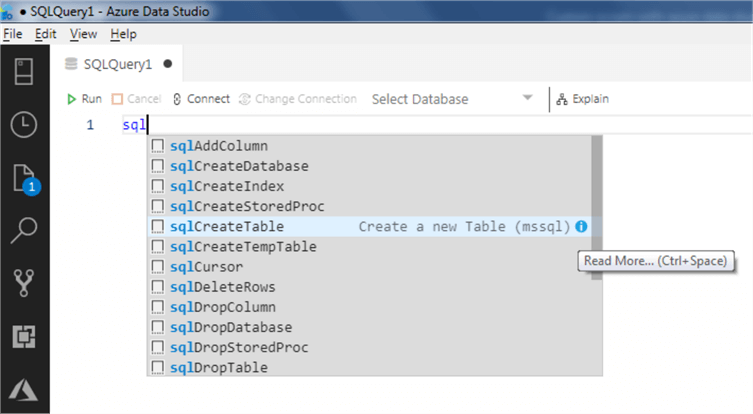

- Azure data studio documentation how to#
- Azure data studio documentation code#
- Azure data studio documentation windows#
Here you can see some of the best practices when building your own Azure Architecture Diagram template.ĭata comes from various sources.
Azure data studio documentation how to#
How to create an Azure Architecture Diagram Template Here you can see the most common examples: Microsoft Azure has a wide range of use cases that it serves. You can use the Azure Architecture Diagram Template to transform your data into actionable insights. When to use Azure Architecture Diagram Template You can also use your preferred languages, frameworks, and infrastructure-even your data center and other clouds-to solve challenges large and small. Each Stencil focuses on a specific task to make it easier for users to access the right set of icons.Īzure helps to build, manage, and deploy applications. The Azure Architecture Diagram has unique icons categorized into Stencils. The Azure Architecture Diagram Template, like any other diagram, visually shows the steps of a given process, in this case, of the cloud architecture framework. What is an Azure Architecture Diagram Template Keep reading to learn more about the Azure Architecture Diagram Template. It will also allow you to create architecture diagrams, combine data, and build and deploy custom machine learning models at scale. The Azure Architecture Diagram Template will help you visualize and develop sophisticated, transformational apps using state-of-the-art machine learning algorithms. In addition, we as developers can contribute to the features these kinds of tools can provide in a much more direct way than ever before.About the Azure Architecture Diagram template Azure Data Studio gives us both new and existing functionality without recreating the wheel, and this provides us the ability to solve the important problems in less time. With the rapidly changing world of technology, the key is to find the right tool for the job and be open to changes in our technology stack. For example, “search servers” lets you quickly filter your list of server connections (figure 2). Hit CTRL+SHIFT+P to open the palette, then type your search in. Command Palette – Lets you quickly find and run any command in the entire application.The dashboard is configurable to allow you to add your favorite visualizations to help monitor the condition of your server(s). Server Dashboard – Connecting to a server launches the Server Dashboard, which displays helpful information such as: SQL engine version/edition, status of most recent backups, database size graph, an object browser/search for databases objects, and a quick database restore task.
Azure data studio documentation code#
Azure data studio documentation windows#
Need access to Registered Servers and want to control SQL Server services on Windows.Need to make use of performance tuning advisors and dashboards.Make use of the Reports for SQL Server Query Store.Manage security (including user management), complete vulnerability assessments, and configure security features.Are doing deep administrative configuration changes.Spend most of your time on database administration tasks.Have a minimal need for wizard experiences.Need to execute most administrative tasks via the integrated terminal using SQLCMD or PowerShell.Need the ability to quickly chart and visualize result sets.Spend most of your time editing or executing queries.Are connecting to a SQL Server 2019 big data cluster.Each tool has its pros and cons, and you’ll get the most mileage if you use a mix of both.įrom the Microsoft site, here are some of the significant differentiators between the two applications. It’s not intended to replace SQL Server Management Studio (SSMS), but more to compliment it.

If you haven’t tried out Azure Data Studio, or if you looked at it in the past and forgot about it, it’s time to give it another try.


 0 kommentar(er)
0 kommentar(er)
